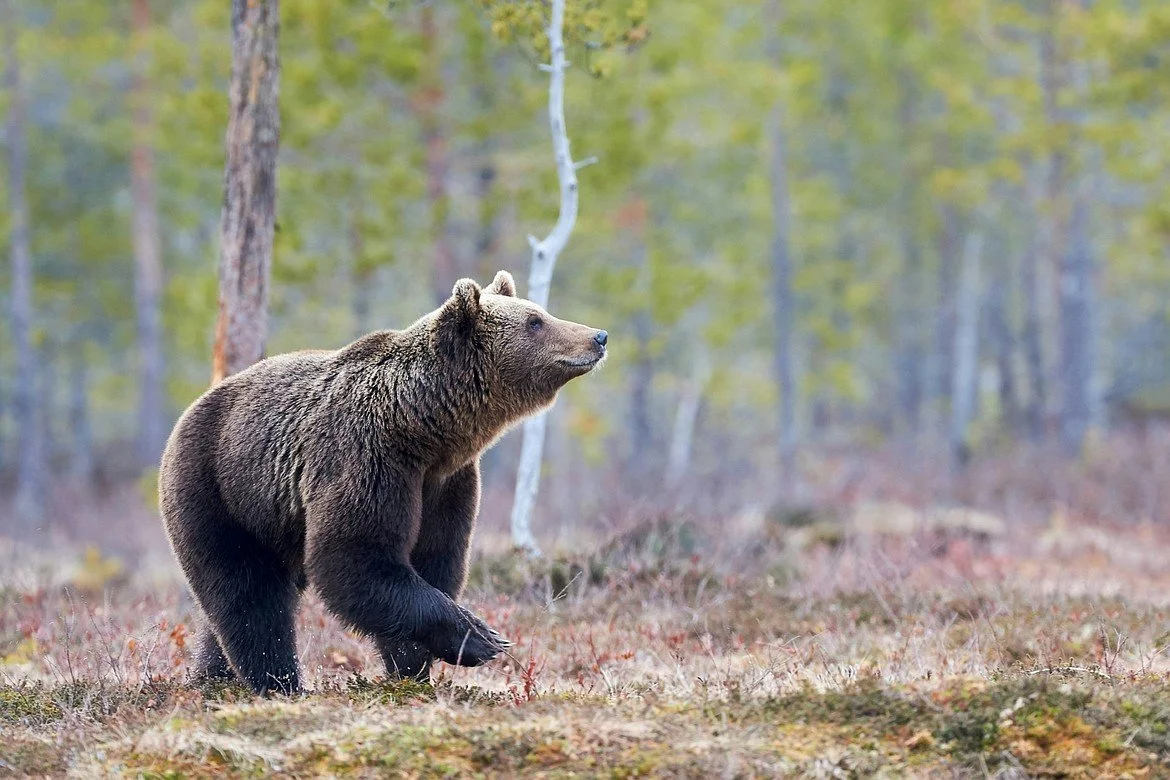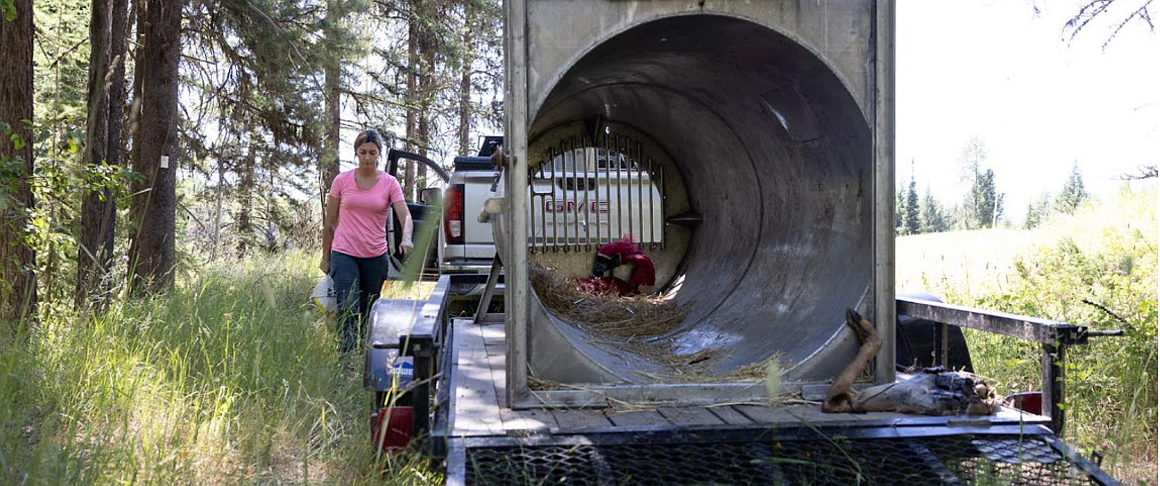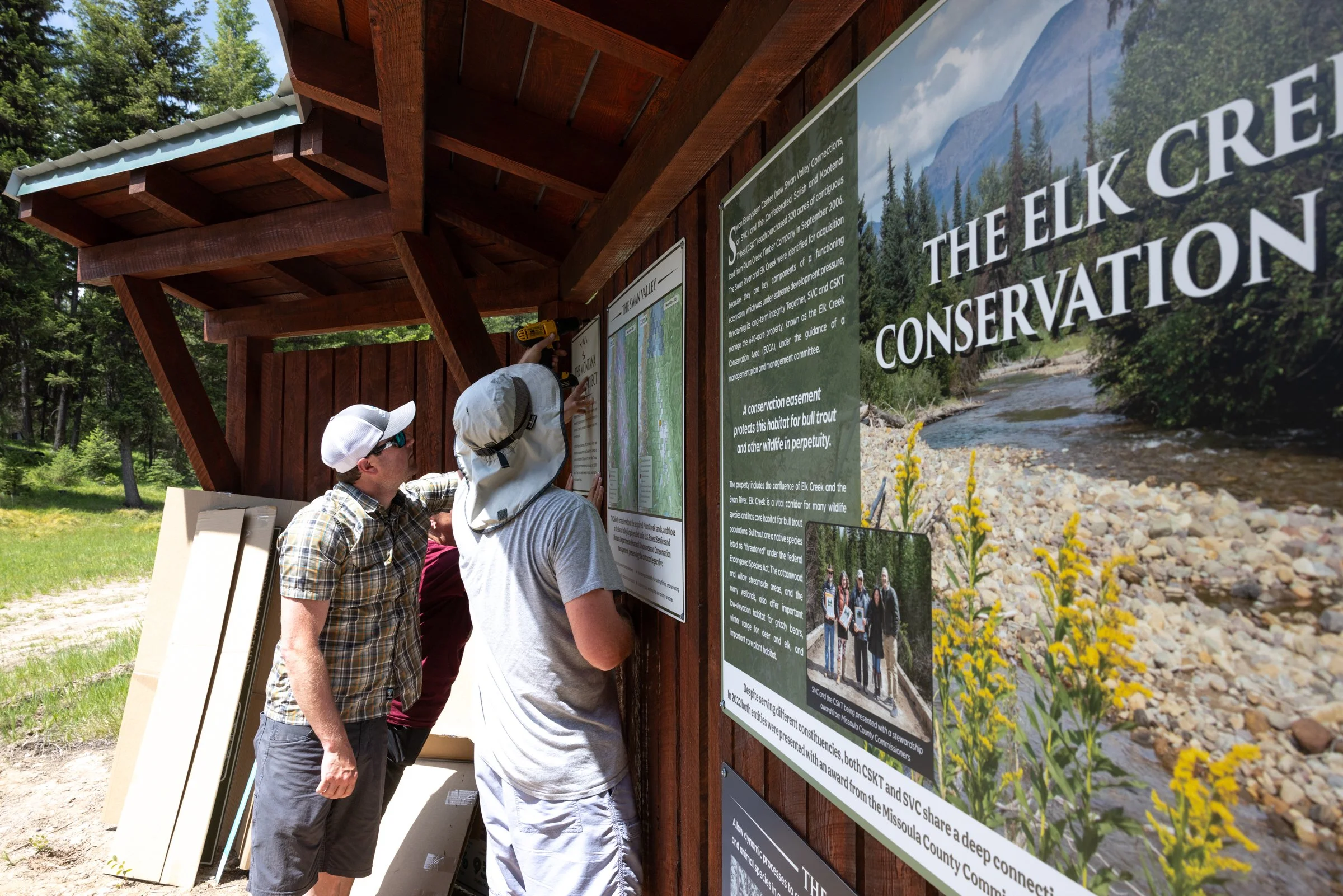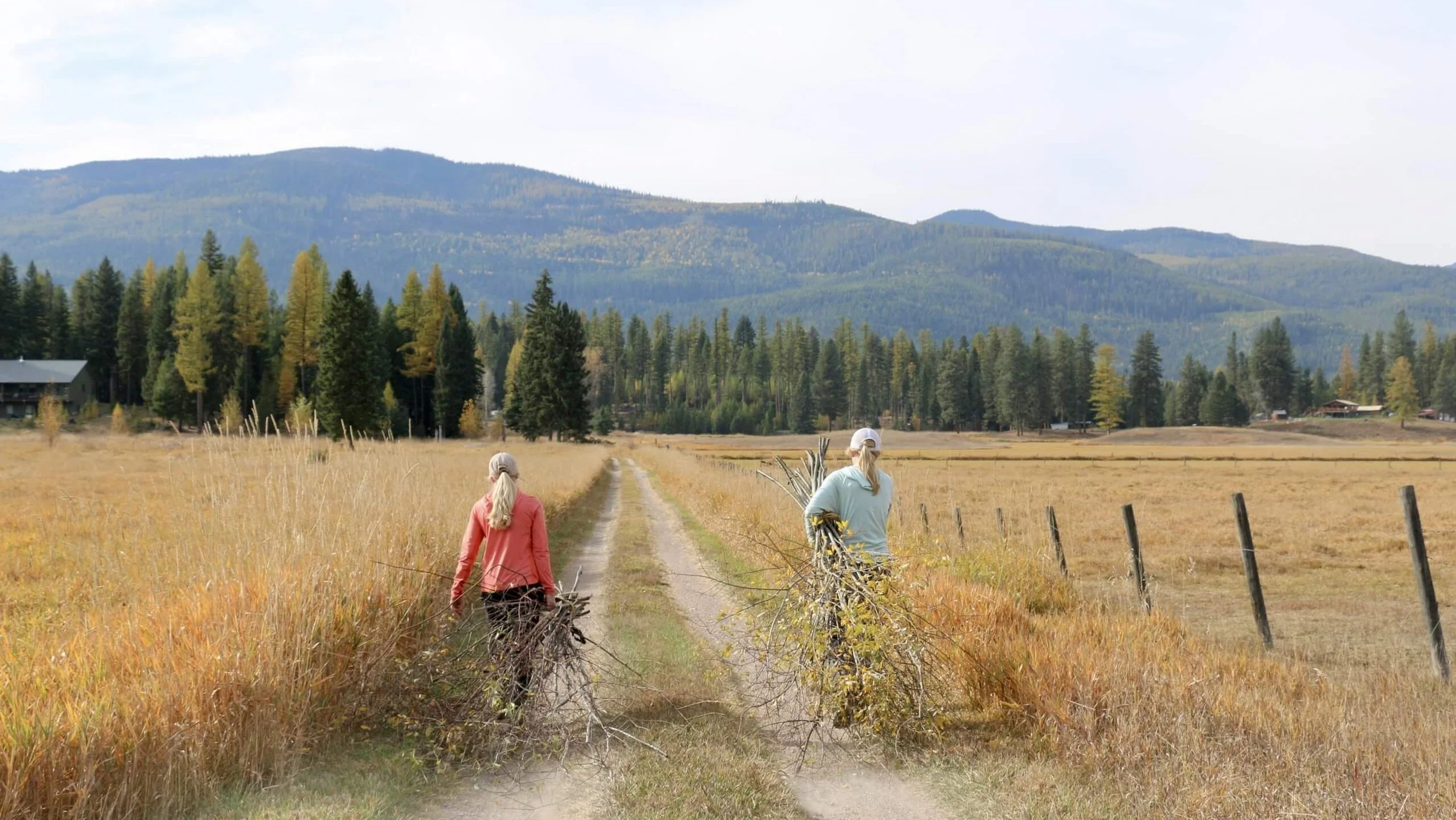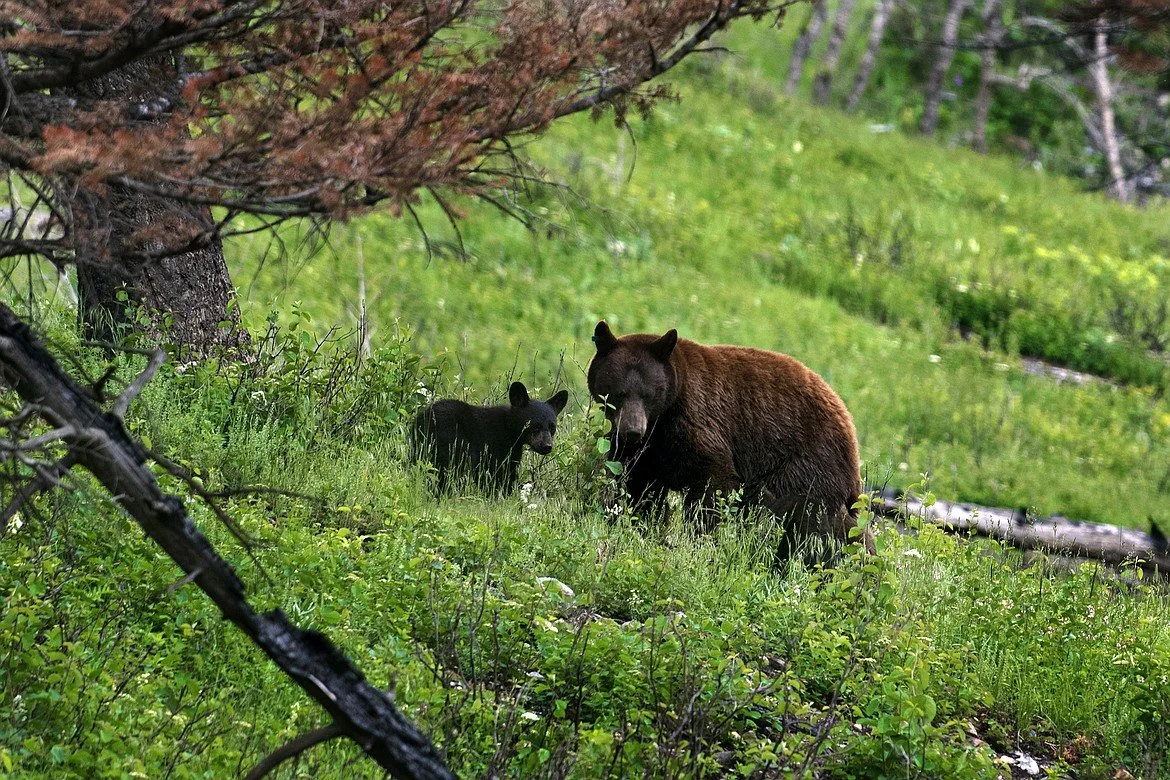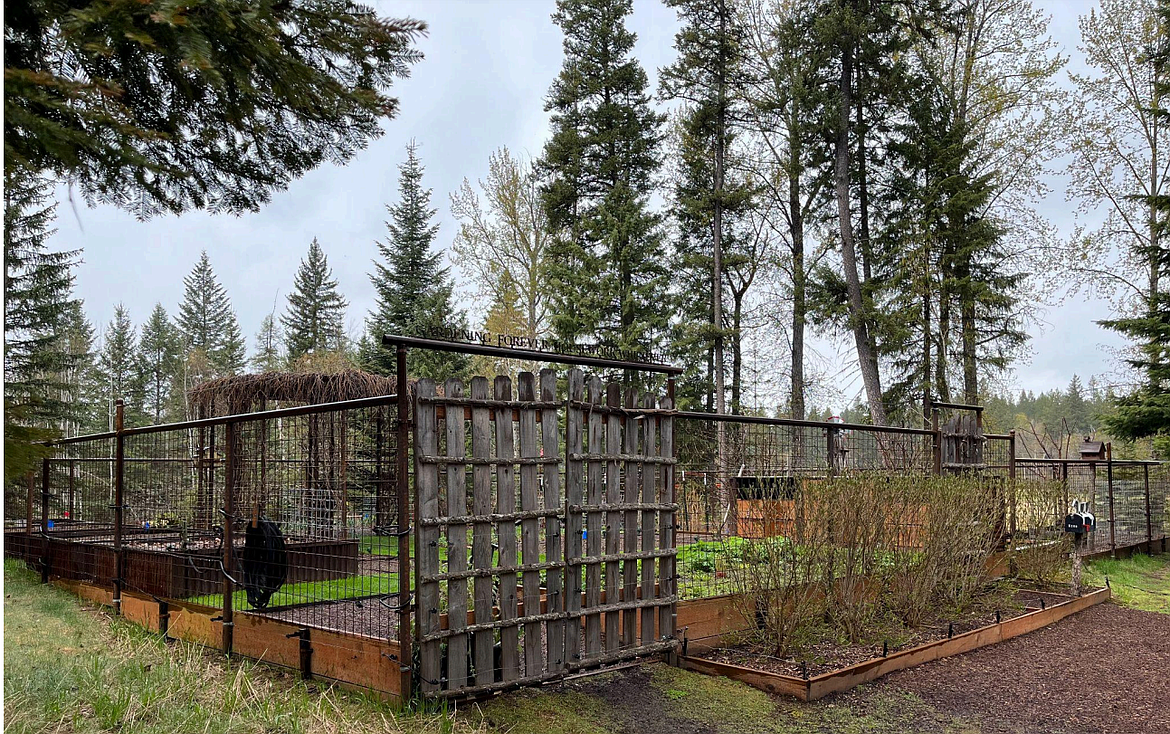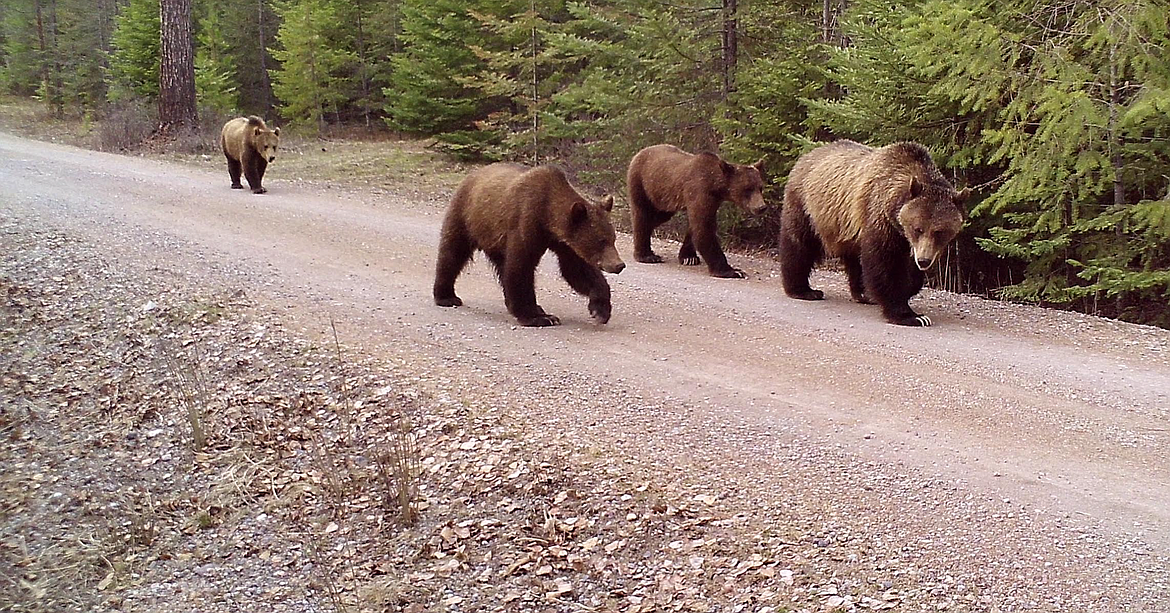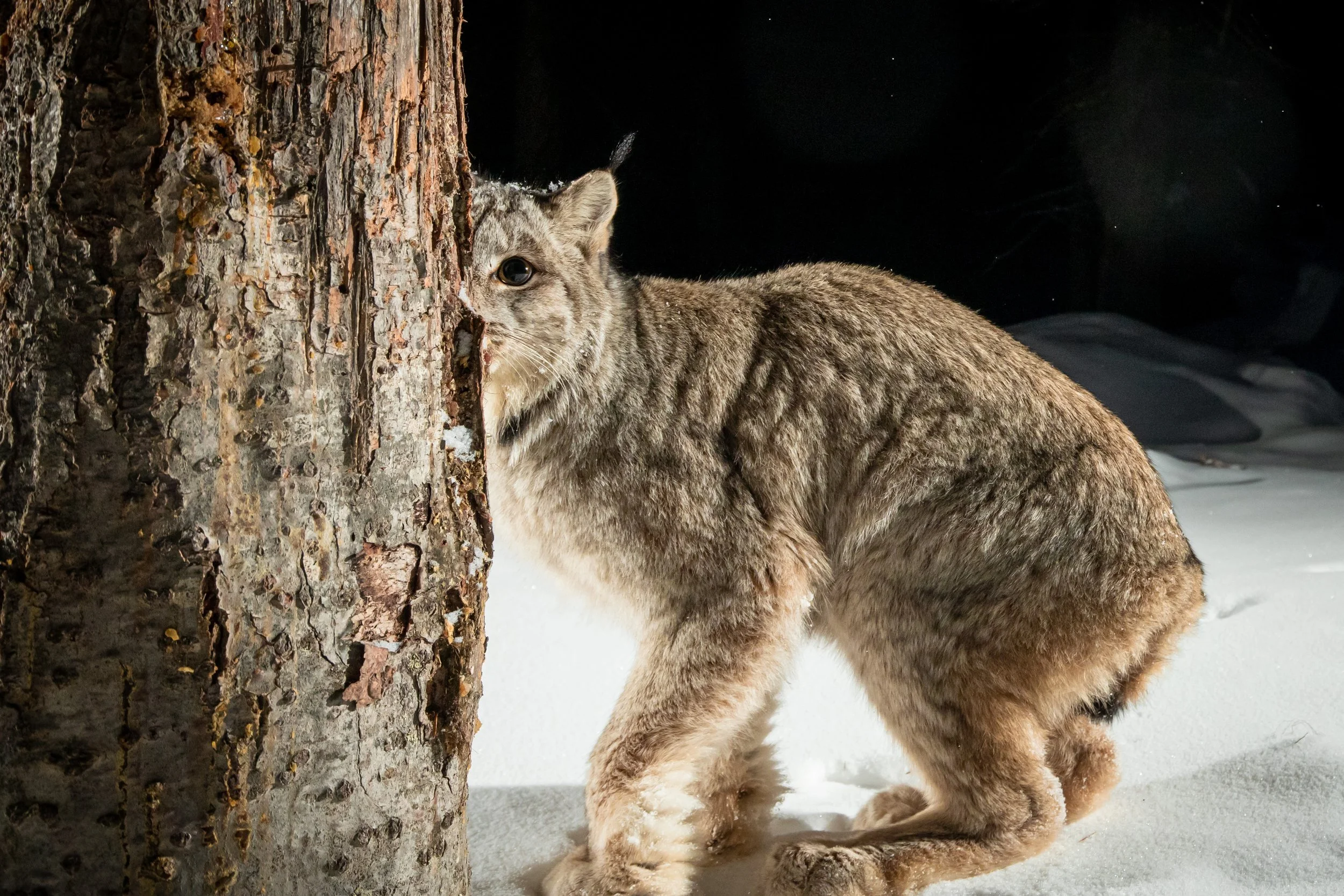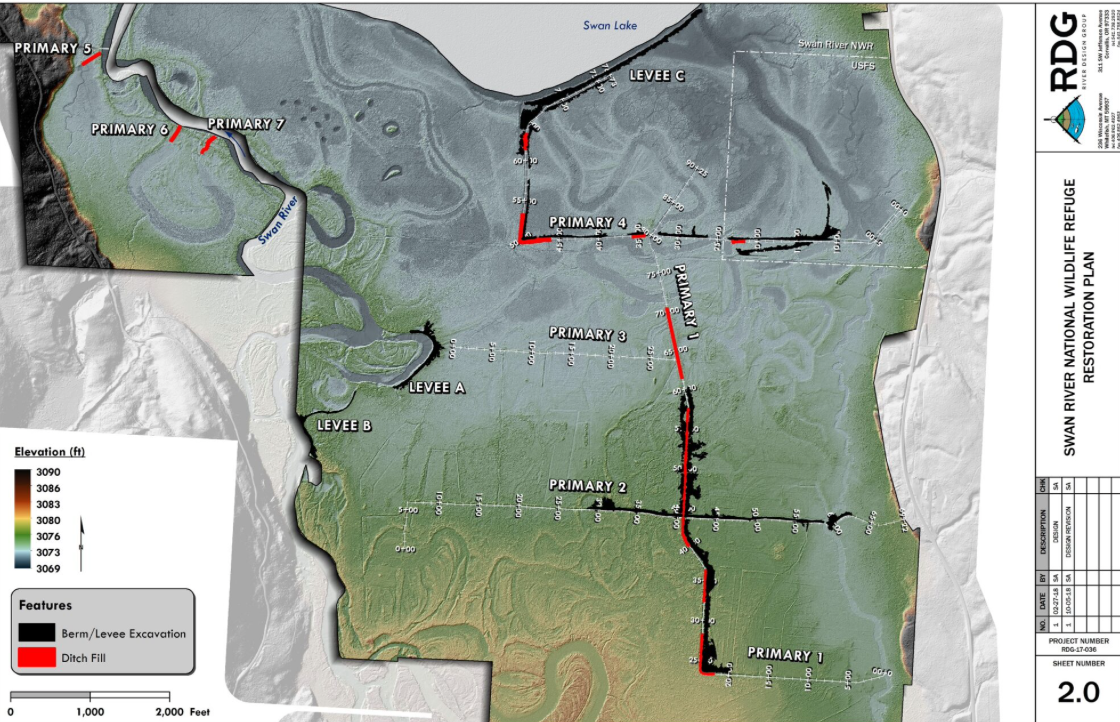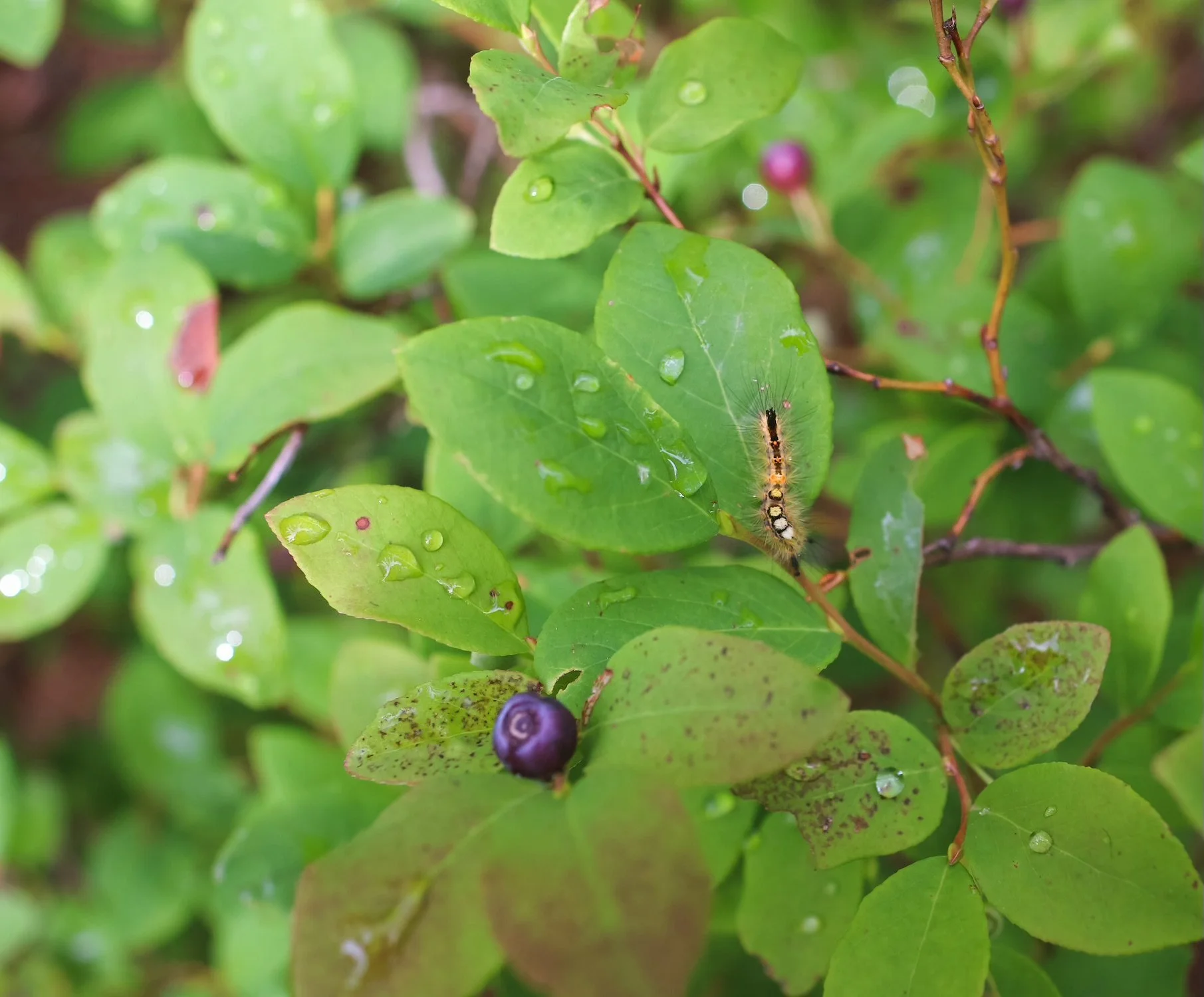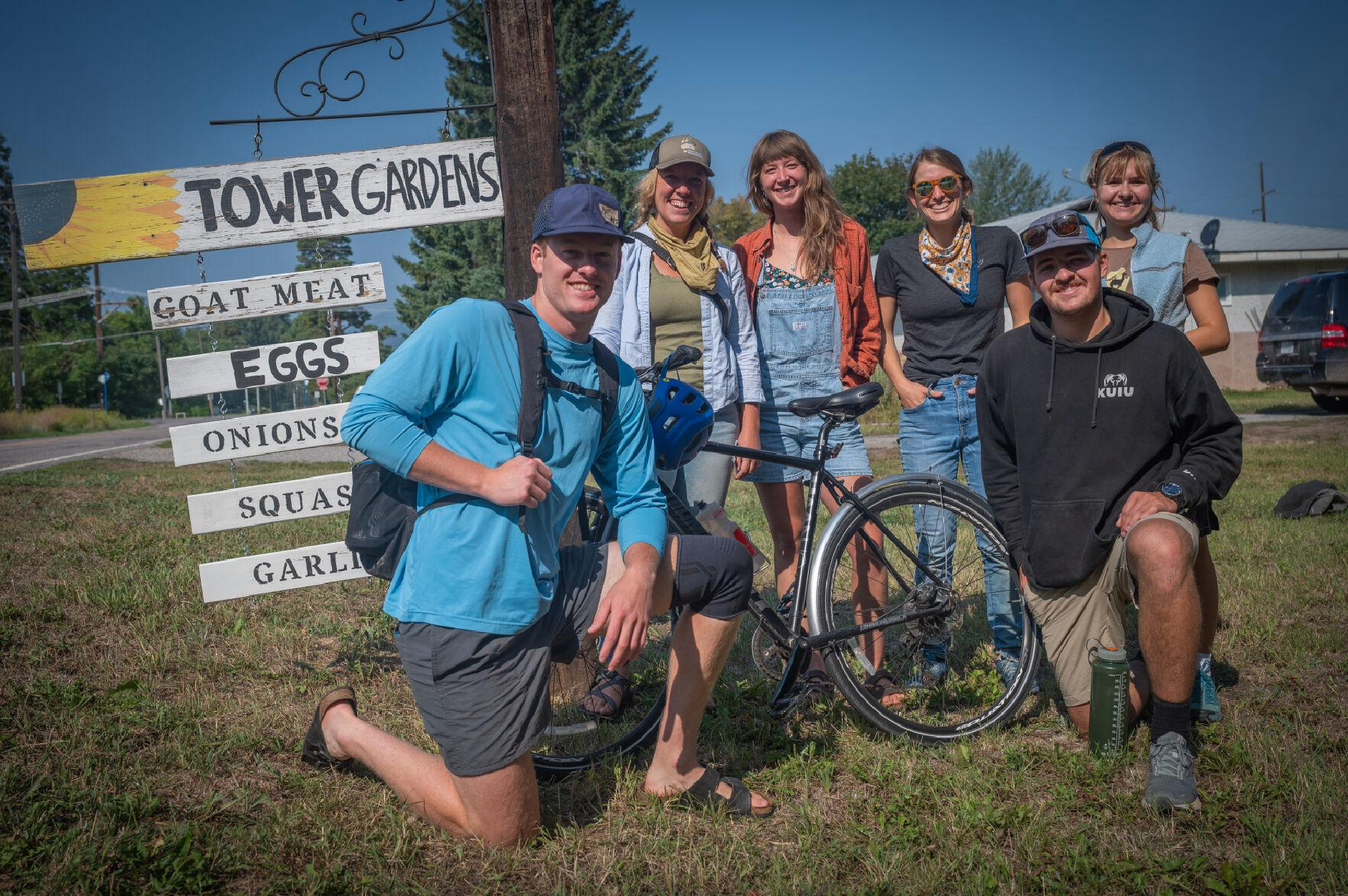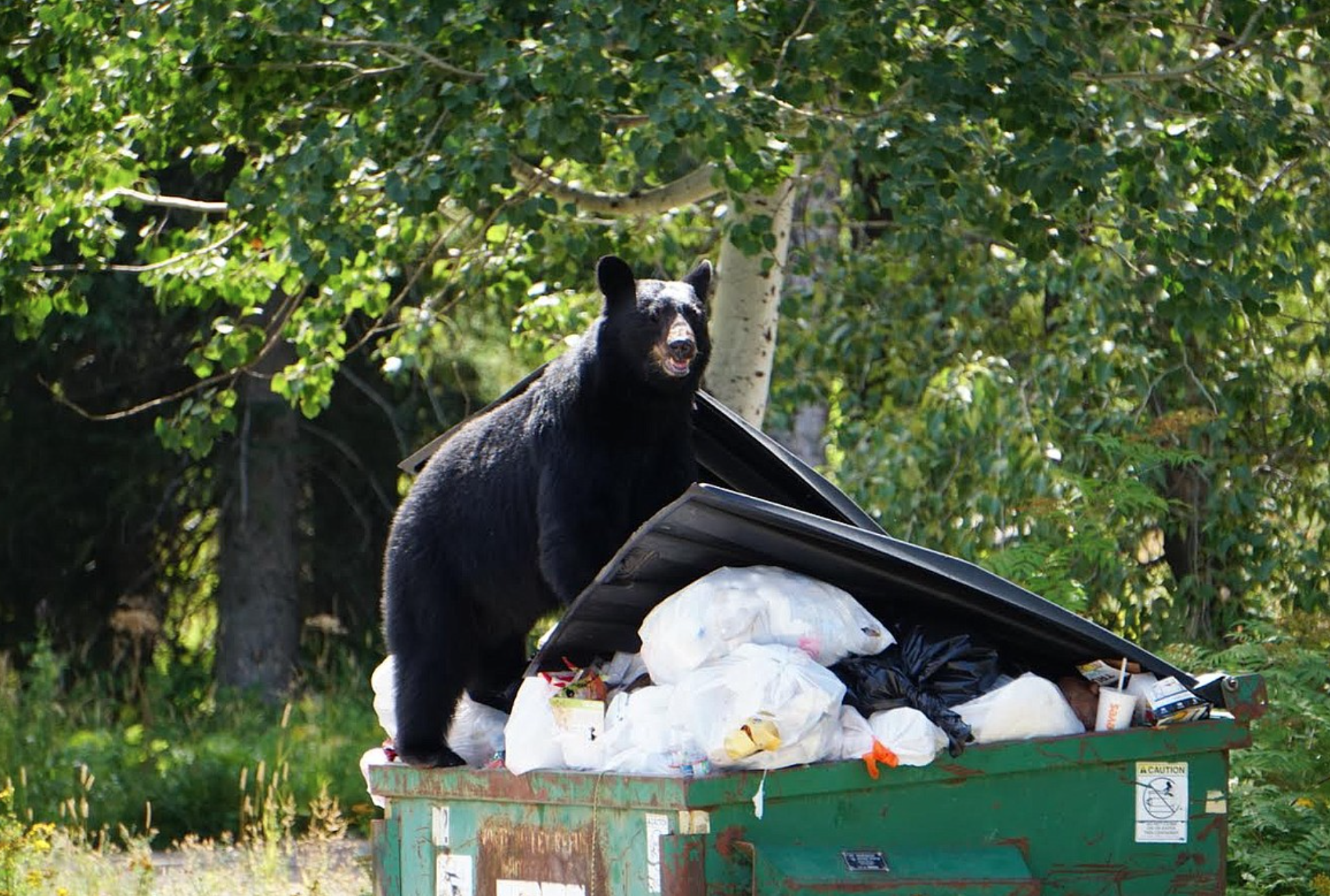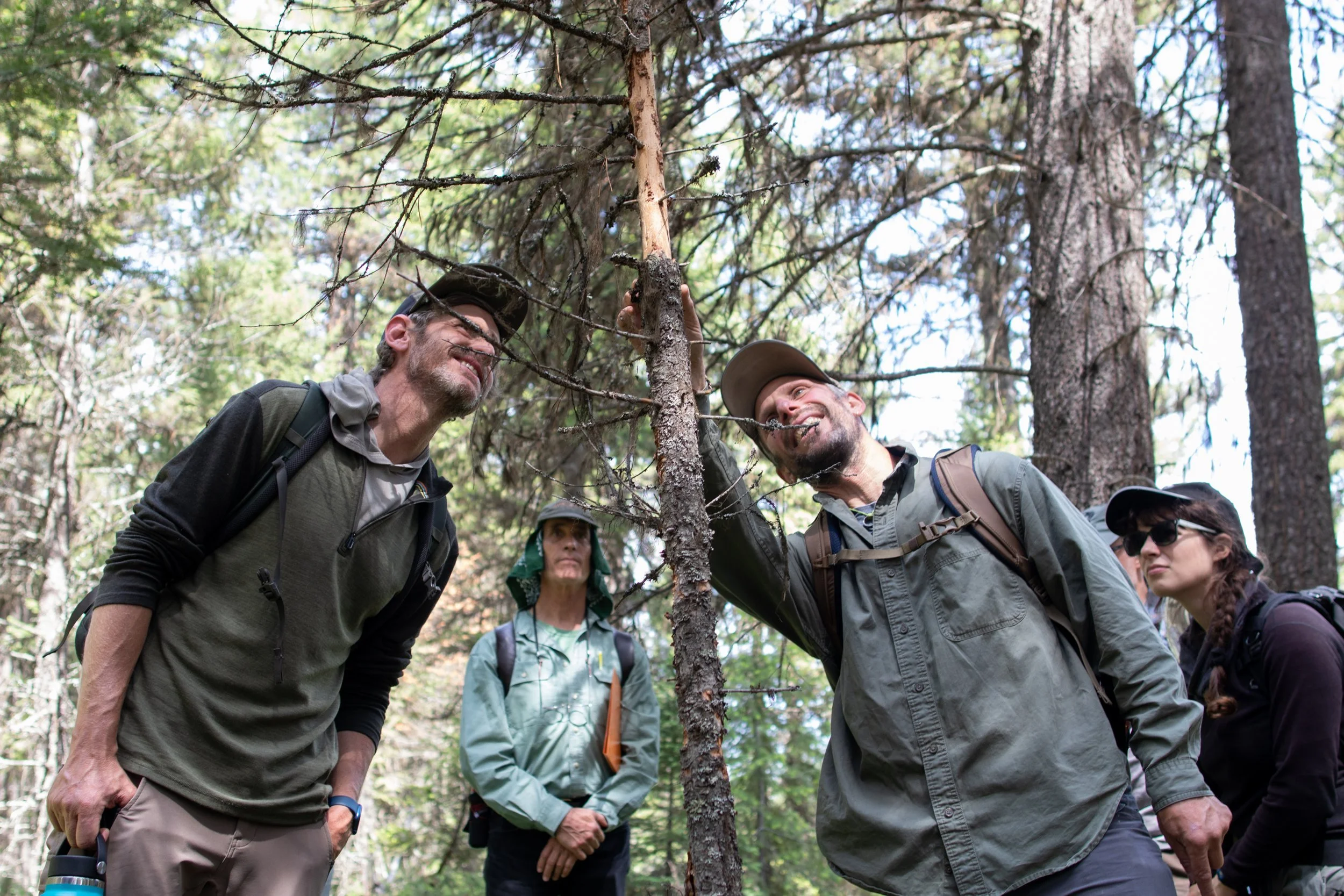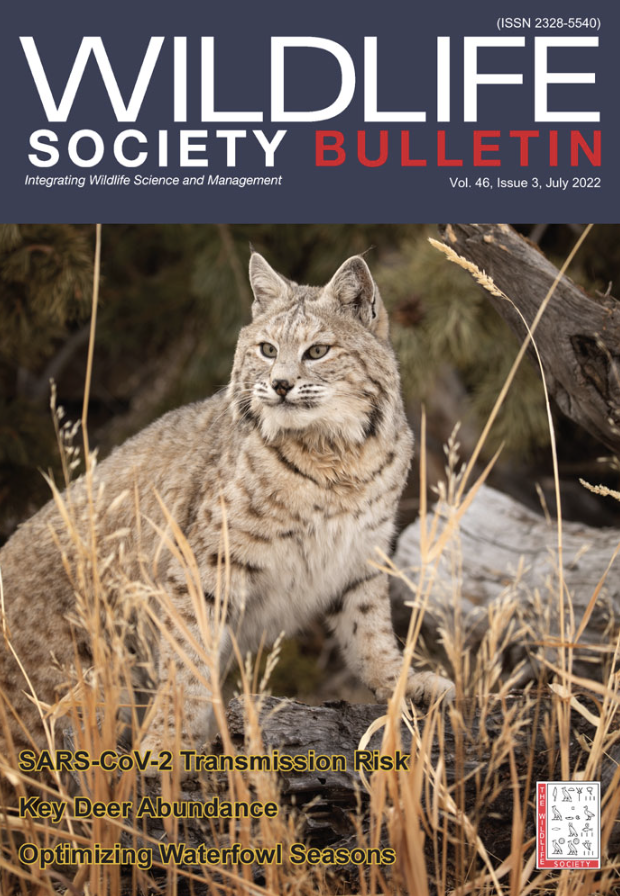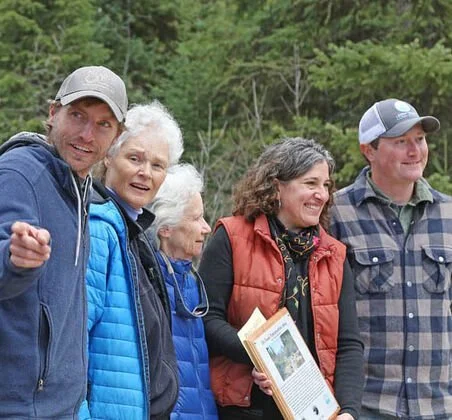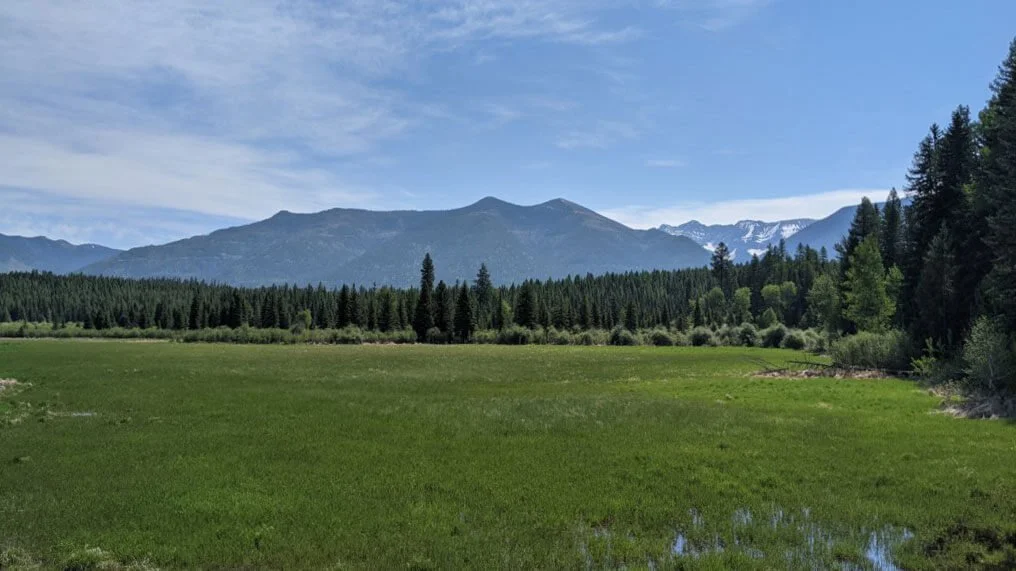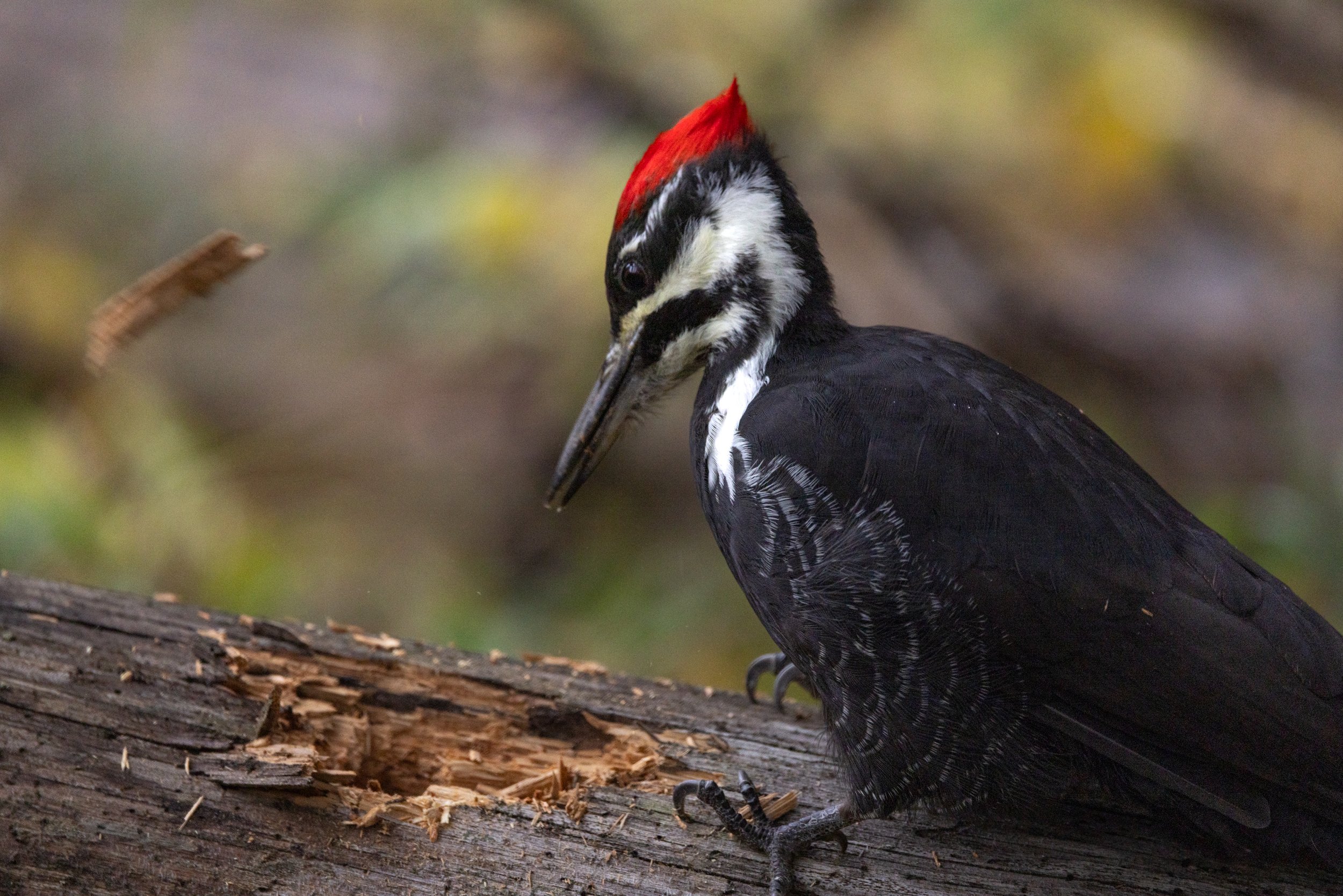
Pressroom
“Montana hunters must be bear aware”
By Jessica Reyes for Bigfork Eagle
October 29, 2025
“Yellow hues from aspen trees and red tints of huckleberry spatter the forest this time of year.
Another color makes its way onto the landscape as well - blaze orange.
Hunting season varies across game animals and state lines, but late October holds tried and true for the most common of all in our region - rifle season for ungulates (hoofed mammals like our deer, elk, and antelope).”
“Bears in hyperphagia: A seasonal strategy for winter survival
By Jessica Reyes for Bigfork Eagle
September 17, 2025
“The first cool mornings of fall have many Montanans reaching for coats and hats. Bears, too, are preparing for winter, but instead of adding layers of clothing, they add hundreds of pounds of fat reserves to prepare for hibernation—more accurately called torpor.”
“Elk Creek Conservation Area gets new educational kiosk”
By Sadie Rison for NBC Montana
August 3, 2025
“People enjoying the outdoors in Condon have a new opportunity to learn about the area after officials unveiled an educational kiosk at the Elk Creek Conservation Area.
“A lot of work by a lot of very dedicated individuals that have been done throughout the ’90s into the early 2000s,” said Rusty Sydnor, CSKT fisheries program habitat restoration botanist.
More than 50 people showed up for the unveiling of the new educational kiosk.
It’s a project nearly 20 years in the making. Confederated Salish and Kootenai tribes along with the Swan Valley Connections acquired 640 acres from the Plum Creek Timber Company back in 2006. ”
“From Trails to Traditions: Mission Mountains Youth Crew Restores Land, Creates Connections”
By Marianne Addison for Char-Koosta News
August 3, 2025
“Armed with snippers, hand saws, McLeods, bear spray and packs on their backs, the Mission Mountains Youth Crew (MMYC) is working to preserve and protect the ancestral homelands of the Confederated Salish and Kootenai Tribes (CSKT). According to the National Forest Foundation website, the youth crew program aims to expose CSKT youth living on the Flathead Reservation “to career pathways in natural resources and helps build a bridge to college through a summer job program.” The youth crew is a partnership between CSKT Natural Resources Department, CSKT Tribal Education, Salish Kootenai College, U.S. Forest Service, Swan Valley Connections, and the National Forest Foundation. ”
“A Mission Mountain Milestone”
By Kay Bjork for Flathead Beacon
June 27, 2025
“Fifty years ago, 73,877 acres of the Mission Mountains area were designated as wilderness…
Lamar said he has an incredible admiration for the place. “I am glad for the people before me who designated it as wilderness.” As a kid, Lamar said he first fell in love with the tangible parts of his wilderness experiences –– the string of fish and knowing where the elk hung out. As he grew up, it grew into something less tangible. It was the feeling he got when he could see over the next ridge, the sense of discovery, and the piecing it all together. It was the interconnections –– and the amazing feeling of being connected to it all.”
“Waking up to the bears waking up”
By Kayla Heinze for Bigfork Eagle
APRIL 30, 2025
“Living in such a seasonal place like the Northern Rockies, we learn to attune to the changing landscape — skiing and knitting in the winter, rafting and hiking in the summer. We’re a lot like our wild neighbors that way. The animals who make their homes in these mountains and river valleys have found ways over the millennia to adapt to the seasons, be it with migration, thick winter coats or hibernation. “
“As bears wake up, securing attractants helps the Swan stay wild and safe”
By Kayla Heinze for Pathfinder
MARCH 27, 2025
"Spring is here in the Northern Rockies with Yellowstone National Park reporting the first fresh grizzly tracks of 2025 on March 12. For those of us lucky enough to call the region home, spring is when we must wake up to the realities of sharing our landscapes with bears.Staying safe around bears requires that we remove or secure anything on our properties that could attract a hungry bear.”
“Swan Valley Connections finds a new home”
By Keely Larson for Pathfinder
JANUARY 9, 2025
"Lamar said SVC's supporters understood the need for the Swan Valley to have the physical presence of a local conservation organization, and supported the nonprofit's goal of not having a gap in the services to the community when the work center lease is up in March. If all goes according to plan, SVC should be able to open to the public in its new location around the same time. ”
“CHASING TRACKS AND TRAILS IN THE WILD SWAN”
By Kay Bjork for Flathead Beacon
JANUARY 5, 2025
"When Luke Lamar explains that he has spent more time exploring the Swan Valley than most people do in 10 lifetimes, it is not to boast. He is just stating fact. And being a scientist, facts are the framework for most of what he does.
He might only be 42 years old, but Lamar has spent most of those years piling up miles and stories in the wild Swan, and he probably knows the land and the animals better than just about anyone. ”
“Two projects investing in the future of Montana’s Swan Valley”
By Kayla Heinze for Vital Ground Foundation
DECEMBER 12, 2024
"Whether you’re a red squirrel caching mushrooms, a grizzly fattening up before denning, or a person putting up holiday decorations, we all prepare for the future in one way or another—especially this time of year. Vital Ground’s field season proved no different. We stayed active on the landscape this fall with restoration projects and conflict prevention partnerships to invest in the future of key conservation areas like the Swan Valley.
South of Glacier National Park and bordered by the wildlife strongholds of the Mission Mountains and Bob Marshall Wilderness, the Swan is a crossroads for grizzlies, rare carnivores like Canada lynx and wolverines, and many other native species…”
“Bears in Hyperphagia: A seasonal strategy for survival”
By Jackie Pagano for Bigfork Eagle
SEPTEMBER 25, 2024
"The first brisk mornings of early fall have people thinking about pulling out winter coats, flannels, and hats in preparation for the winter ahead. Bears are also preparing for the cold winter in Montana. However, instead of wool coats and mittens, their idea of bundling up involves layering on a few extra hundred pounds of fat reserves.
In severe winter climates like ours, bears rely heavily on fat reserves to sustain them through torpor, also known as hibernation…”
“Updates on Montana FWP black bear study presented at Bear Fair”
By Avery Howe for Bigfork Eagle
JULY 31, 2024
"Montana Fish, Wildlife and Parks Black Bear Monitoring Biologist Colby Anton presented an ongoing statewide black bear population study during Swan Valley Resources’ Bear Fair at Swan River Community Hall on Saturday. The project aims to estimate the overall density and abundance of black bears across the state.
‘As a biologist, one of the most common questions we get is just how many animals there are…’”
“Coexisting with ease: keeping the garden bear-free”
By Chris Moore for Bigfork Eagle
JUNE 26, 2024
“Like so many new Montana residents moving here from elsewhere, we were naïvely unaware of the strong bear attraction to both compost and fruit trees. Luckily, through the advice of neighbors and Swan Valley Bear Resources (SVBR), we learned of the importance of electrifying our planned fence to keep the bears at bay.”
“How a local grizzly bear raised three offspring amid human presence”
By Jackie Pagano for Bigfork Eagle
MAY 22, 2024
“When grizzly bears make the news, the headlines are often negative. Dorothy’s story, however, is a positive one, so far. Dorothy is an 18-year-old female grizzly widely known throughout Bigfork and Ferndale. For the last two years, Dorothy has been accompanied by her three offspring, and since male grizzly bears do not provide parental rearing, she has been tasked with finding enough food for herself and her cubs. She has managed to do so while defeating the odds…”
“Bear Fair teaches Seeley Elementary students how to be good neighbors”
By Keely Larson for Pathfinder
MAY 16, 2024
“Danielle Oyler has worked across Montana teaching kids and adults about living in bear country in her role as the wildlife stewardship outreach specialist with Montana Fish Wildlife & Parks. In front of a group of Seeley Lake Elementary School third graders at the Bear Fair, she said students in Seeley Lake have seen more bears on average than any other students at schools across the state…”
“Rewilding the Swan Valley”
By Kay Bjork for Flathead Beacon
May 6, 2024
“Gazing across the marsh from the Swan River National Wildlife Refuge, visitors are inclined to be on the lookout for birds or other wildlife that visit or live here. But scattered throughout the refuge are fenceposts and the remains of log buildings, strewn like bones of a long-dead animal.”
“Grizzly bear conservation is as much about human relationships as it is about the animals.”
By Alex Metcalf for The Conversation
APR 2024
“Some conservation groups have seen success uniting community members who might otherwise be divided around a shared identity associated with their love of a particular place. The conservation group Swan Valley Connections has used this strategy in Montana’s Swan Valley to reduce conflict between grizzly bears and local residents.”
“Firesafe Swan”
By Jackie Pagano for The Pathfinder
FEB 01, 2024
“For time immemorial Indigenous people burned low-intensity fires across this landscape to manage forests for people and wildlife. Wildfire suppression actions over the last 100 plus years have created dense forests with high wildfire risk. Forests that were once open with widely spaced trees created by regular low intensity fires are now crowded with thickets of small trees…”
“Mountain Mission”
By Rob G. Green for BBC Wildlife
DEC 2023
“The sound of cold steel against cold steel breaks the silence that typically accompanies winter this high up in the Mission Mountains. Luke Lamar readjusts the hammer in his hand, looks around as if he'll somehow spot the echo he's created, and then takes another swing at the nail that's pinning the deer leg against the tree trunk…”
“Swan River National Wildlife Refuge Wetland Restoration Project: Architecture, Engineering, and Construction”
By ESRI
OCT 20, 2023
Hear from ESRI (the makers of ArcGIS Software) on how GIS softwares were used in analyses of the Swan River NWR Restoration Project that Swan Valley Connections contributed to in the fall of 2022.
“Bears, Conflicts, and Availability of Natural Food Sources”
By Mark Ruby for Bigfork Eagle
OCT 10, 2023
“The availability of natural foods is a strong predictor for human-bear conflicts we have each year in the ecosystem. In 2004 study in the Greater Yellowstone Ecosystem, researchers found that incidents of bears damaging property and obtaining anthropogenic foods were inversely correlated to the availability of naturally occurring bear foods. Omnivorous bears capitalize on a variety of food sources that are seasonally and or spatially abundant within their habitats.”
“Bike to Barns Event in Missoula
Opens to Participants”
By David Erickson for Missoulian
AUG 31, 2023
“Missoula is nicknamed the “Garden City” for a reason, and a local nonprofit is helping people get a workout and see those gardens for themselves.
The Community Food and Agriculture Coalition launched its fifth annual Bike to Barns event in late August and the event is open to participants until Sept. 24.”
“Bear Aware: Expectations and education- dispersed site camping”
By Kathy Koors for Bigfork Eagle
AUG 18, 2023
“As for wildlife attractants and bears, the person who leaves the food in a camp or fire pit, or even tosses food off the trail while hiking might not see the wildlife, but the person coming afterwards might, creating a potential conflict. Animals could seek campsites or trails for discarded goodies because they have found them there in the past. A bear or other wildlife could become habituated or food conditioned, leading to the potential for negative human-bear conflicts.”
“First Canadian Track and Sign Specialist”
By Tracker Certification North America
AUG 31, 2023
“The rich wildlife of the Swan Valley, nestled between the Mission Mountain Range and Swan Mountains, is an ideal location for wildlife tracking training and evaluations. Signs we encountered on the evaluation, run by Casey McFarland and David Moskowitz, included everything from the tiny tracks of a Jumping Mouse, to signs of every large carnivore found in the Rocky Mountains: mountain lions, black bears, grizzly bears, and wolves. “
“Targeted Efforts are More Effective Than Combined Approaches for Sampling Two Rare Carnivores”
By Jessie D. Golding, Cory R. Davis, Luke Lamar, Scott Tomson, Carly Lewis, Kristy Pilgrim, Mary Ruby, Mike Mayernik, Kevin McKelvey for Wildlife Society Bulletin
AUG 16, 2022
“Verifying the abundance and distribution of species of conservation concern is necessary for land management agencies to determine potential impacts of management actions and for monitoring long-term population trends. In the Rocky Mountains of the United States, Canada lynx (Lynx canadensis) and wolverine (Gulo gulo) are currently species of management importance for federal land management agencies.”
“Elk Creek Conservation Partnership Recognized”
By Susan Monahan for Seeley S Pathfinder
MAY 19, 2022
“The Missoula County Commissioners recognized partners from the Confederated Salish and Kootenai Tribes (CSKT) and Swan Valley Connections, formerly Swan Ecosystems Center (SEC), May 10 for their work to acquire and maintain the natural resources of the Elk Creek Conservation Areas (ECCA) in the Swan Valley.
The Missoula County Open Lands Citizen Advisory Committee wanted to present the groups involved with recognition of their hard work to conserve the area and research its history…”
“Vital Ground Expands Swan Valley Conservation Corridor”
By Vital Ground Foundation
NOV 18, 2021
“This undeveloped property provides key East-West habitat connectivity for myriad wildlife species that call the Swan Valley home,” says Luke Lamar, Conservation Director for Swan Valley Connections, a conservation and education nonprofit and frequent Vital Ground partner based in Condon.
“On the Prowl: How FWP crews, partner organizations, volunteers, anglers, boaters, and others search for aquatic invasive species to help prevent their spread”
By Tom Dickson for Montana Outdoors
JUN 28, 2021
“Many organizations recruit “citizen scientists” to help. For instance, volunteers with Swan Valley Connections, the Blackfoot Challenge, the Clearwater Resource Council, and the Missoula County Weed District sample Holland, Van, Lindbergh, and Swan lakes three times each year to look for invasive mussel infestations.”
“Swan River National Wildlife Refuge Receives $1M Grant for Wetland Restoration”
By Tristan Scott for Flathead Beacon
MAY 3, 2021
“Wetland restoration at the Swan River National Wildlife Refuge received a critical funding boost this week in the form of a $1 million grant to restore natural water flows to wetlands that were ditched and drained during the valley’s homesteading era a century ago.
Swan Valley Connections, in partnership with the U.S. Fish and Wildlife Service (USFWS), is the recipient of the North American Wetlands Conservation Act (NAWCA) grant to restore the local wetlands and complete other projects this summer and fall.”


